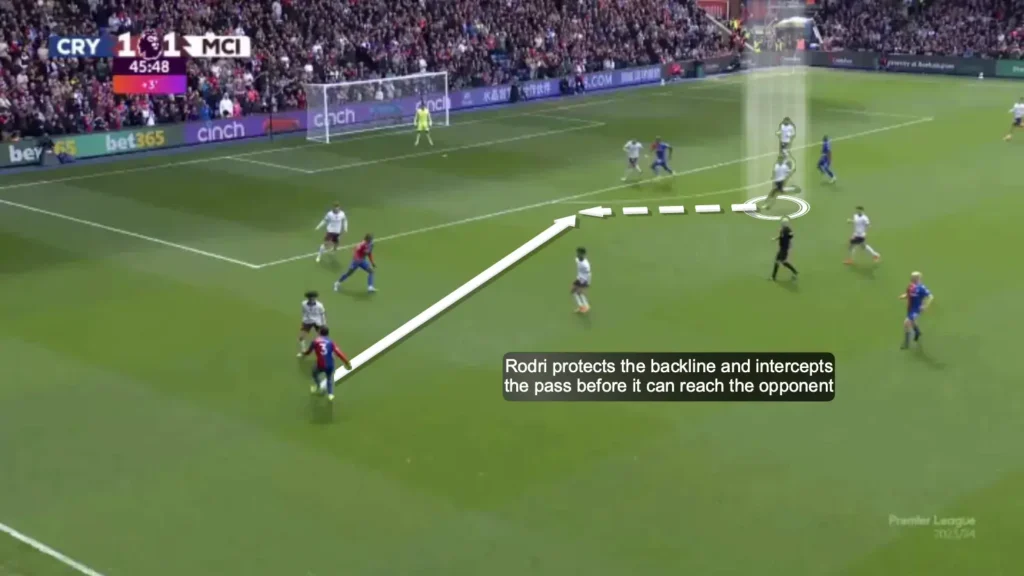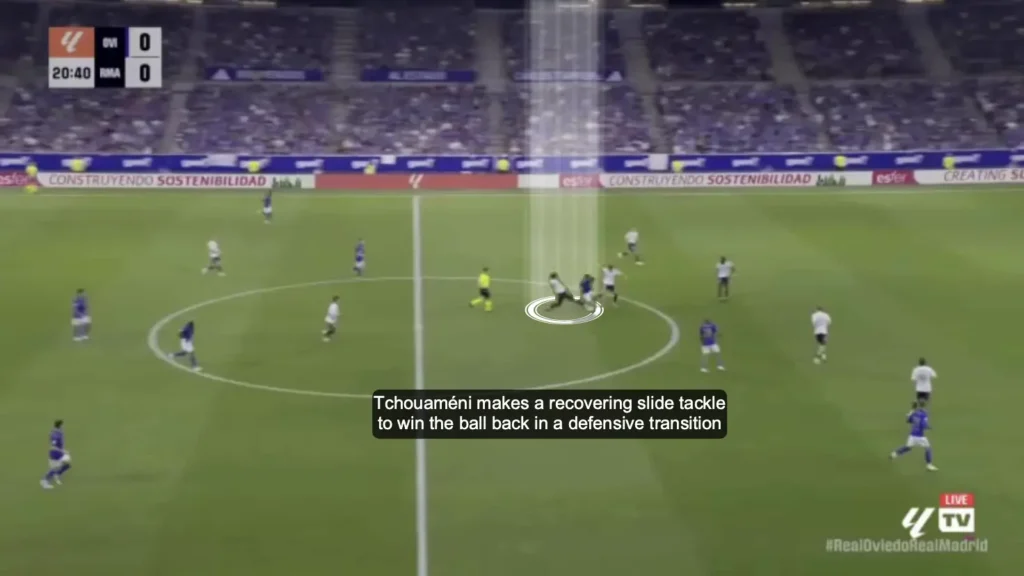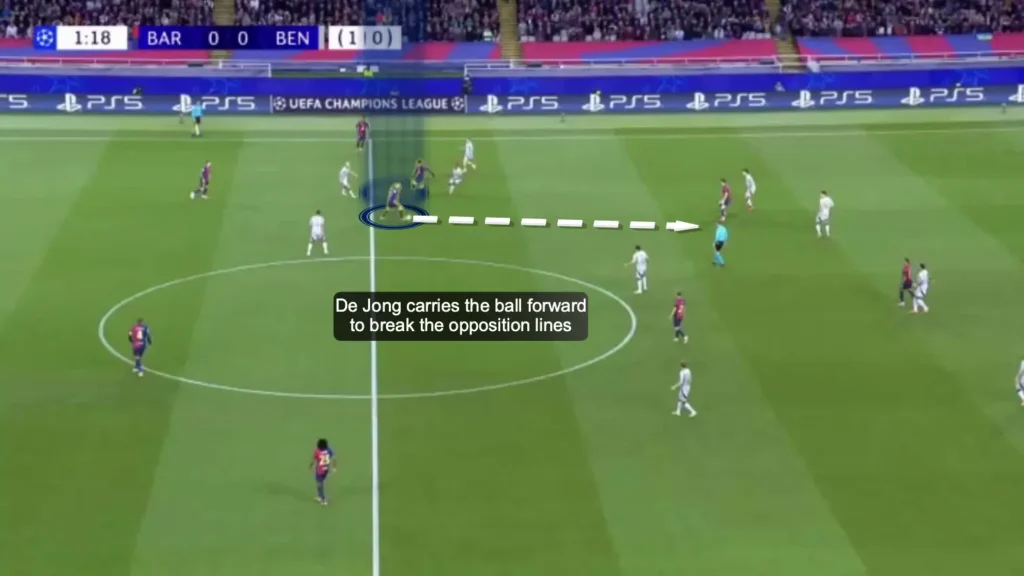In modern football, few roles shape a team’s structure and rhythm more than the defensive midfielder. Whether anchoring a lone pivot in a 4-3-3 or forming part of a double pivot in a 4-2-3-1, the defensive midfielder — or “number six” — sits at the tactical crossroads between defense and attack.
Scouting players in this position requires understanding far more than defensive actions or passing accuracy. The best defensive midfielders combine positional discipline, anticipation, and technical quality with a deep understanding of game context. They don’t just protect the defense — they control the game.
This article breaks down how to evaluate defensive midfielders through three key lenses: defensive shielding, defensive recovering, and offensive contribution.
Defensive Shielding – Protecting the Zone
At its core, the defensive midfielder is the team’s shield. Defensive shielding involves defending the space directly in front of the center-backs — the most valuable zone for stopping attacks before they become dangerous.
A good defensive midfielder constantly scans for threats, maintains compact distances with the backline, and positions himself to intercept passes into the striker or attacking midfielders. This requires anticipation and body orientation, not just tackling ability.
For example, Rodri’s greatest strength is not his volume of tackles but his ability to delay, screen, and control the opponent’s options. By positioning himself intelligently, he protects central spaces while allowing fullbacks and center-backs to defend more aggressively around him.

When scouting for defensive shielding, key indicators include:
- Positioning when the ball is central or wide – Does the player block vertical passes and occupy effective screening zones?
- Scanning and awareness – How often does he check his shoulders before adjusting position?
- Defensive posture and timing – Does he engage too early or maintain patience to delay attacks?
- Compactness with the backline – Does he help the team remain connected, or leave gaps between lines?
Ultimately, shielding is about control. The best sixes make defending look effortless because they prevent problems before they appear.
Defensive Recovering – Controlling Large Spaces
While shielding focuses on positional defense, defensive recovering refers to defending in larger areas — pressing forward, tracking back, and managing transitions.
In modern football, where pressing systems and fluid structures dominate, a defensive midfielder must defend both space and time. Recovering involves anticipating where danger will emerge and reacting decisively, whether by stepping up to press or covering behind an advancing fullback.
Players like Aurélien Tchouaméni or João Palhinha excel here. They can sprint into wide zones, close down opponents in open space, and win duels without losing balance. This quality is especially valuable in high-tempo leagues or pressing-oriented systems, where defensive transitions often define matches.

When scouting this aspect, focus on:
- Acceleration and mobility – Can the player cover ground quickly when possession is lost?
- Pressing judgment – Does he know when to step out to press or when to hold position?
- Defensive duels – How effective is he in 1v1s, especially when isolated?
- Recovery runs – Does he track runners into the box or stop counterattacks early?
Defensive recovering separates static holders from dynamic controllers. It determines whether a team can sustain pressure or gets repeatedly exposed in transition.
Offensive Contribution – Balancing Risk and Progression
A defensive midfielder’s value isn’t limited to his defensive work. In possession, he becomes the team’s metronome and problem-solver.
The modern six must balance risk and reward — knowing when to recycle possession and when to force progression through the lines. The most complete players, like Frenkie de Jong or Martín Zubimendi, manipulate pressure with intelligent body positioning, open passing angles, and controlled forward carries.

There are three key ways a defensive midfielder contributes offensively:
- Receiving under pressure – The ability to turn or play forward in tight areas. A player who hides behind opponents or receives square will struggle to progress play.
- Passing range and disguise – Top-level sixes vary their tempo and use disguised passes to break lines.
- Carrying and dribbling – Driving forward attracts pressure, freeing teammates and destabilizing compact blocks.
Scouts should also assess how well the player reads the collective rhythm — does he slow the game down when needed or accelerate play after regaining possession?
Offensive contribution from a six is not about volume of passes or assists, but about decision-making quality. The question to ask is: does he make the team function better with and without the ball?
Conclusion – The Balance Between Control and Chaos
Scouting a defensive midfielder is about identifying balance — between positional discipline and mobility, patience and aggression, safety and ambition.
The best players in this role, whether operating as a lone six or in a double pivot, understand when to stay and when to move, when to risk and when to retain. They are the silent organizers, the ones who hold the team’s structure together both defensively and offensively.
As football evolves, the defensive midfielder continues to be redefined — from destroyer, to playmaker, to hybrid controller. But the essence remains the same: control the space, control the game.
All images and tactical visuals in this article were created using Once Sport—one of the most advanced and user-friendly platforms for annotating footage, visualizing movements, and producing high-quality analysis clips. As a reader of The Football Analyst, you can enjoy 10% off plus one month free with code TFA10 at checkout.
